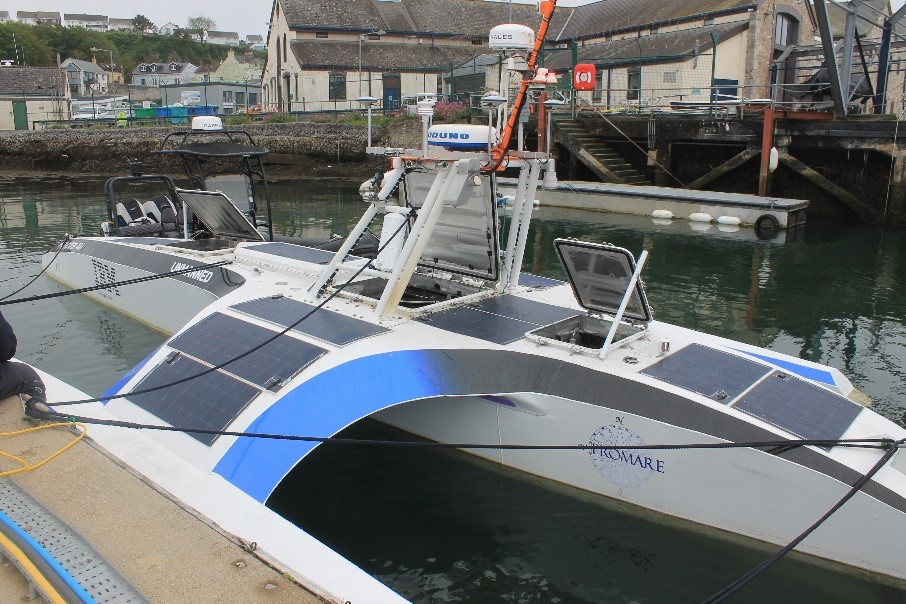Mayflower 400: Mayflower Autonomous Ship (MAS) introduction
Published on 30 July 2021
Departing from Plymouth the Mayflower Autonomous Ship (MAS) follows in the wake of her famous namesake of 400 years ago, into the history books. The original Mayflower, which took the first European pilgrims and settlers to the new world in 1620, was on a voyage of discovery which changed the world.
Mayflower 400 is one of the most advanced vessels afloat today and is looking to change our world, advance our knowledge and understanding of autonomous vessels and enhance our ability to discover and explore the oceans for the future.

IMCA Contact
Andre Rose
Technical Adviser – Remote Systems and ROV, Offshore Survey, Digitalisation
Contact
Headed up by Brett Phaneuf, CEO of Subdimension and MSubs, and sponsored by Promare and IBM, the project is driven by three sets of goals:
Technological goals:
- Build a fully autonomous, crewless, full sized vessel capable of independently traversing the oceans.
- Develop an ‘AI Captain’ that draws on a multiple data sources of data to sense, think and make decisions at sea – even with no network connectivity.
Scientific goals:
- Create a flexible and cost-effective platform to help scientists gather vital data about the ocean.
- Further understanding in key areas especially pollution, marine mammal conservation and global warming.
Historical goal:
- Use the 400th anniversary of the historical Mayflower voyage to speak the future of marine exploration.

Externally the Mayflower appears a be a normal, though very modern, vessel.
A trimaran design with a central hull flanked, on either side, by an outrigger.
At 15m long and 6.2m wide, constructed with aluminium and composite material, the vessel weighs around 5 tonnes.
Dual 20kW, permanent magnet, electric propulsion motors propel the vessel and these are in turn powered by a combination of Lithium ion-phosphate batteries and solar panels on the top surface of the deck.
With no crew on board, the vessel is equipped with 3 payload bays, for scientific equipment up to 700Kg. Onboard sensors can sample and monitor the quality of water and air, monitor sea level and depth, sample water for pollutants and chemical content and listen for marine mammals.
Conceived in 2016, the vessels main challenge is to complete the 3349 miles journey between Plymouth, Devon, England and Plymouth, Massachusetts, New England autonomously under the control of her AI Captain.
During her voyage the Mayflower will pass over the resting place of the RMS Titanic. Brett did however express the hope that he would not actually see the Titanic.
Many trials have been conducted, using remote and autonomous vessels, for various commercial uses such as tugs, ferries, and feeder container vessels. Transport of cargo, on inland waterways, will very likely be the first to benefit from these vessels with several trials ongoing. There is also considerable interest in military applications where these “drone vessels” can be used to reduce the danger to human life.
The use of uncrewed surface vessels (USV’s) has become more common, in the offshore industry over the last few years, carrying out various types of survey, and their use will increase significantly over the next few years. These USV’s, although crewless, are under the control of an operator located remotely either in a remote-control-centre (RCC) also known as a remote-operations-centre (ROC) or onboard another platform or vessel and usually under line of sight (LOS) control. More advanced systems are now capable of over the horizon (OTH) operations where the communication for control and data are provided via satellite link.
Mayflower 400, although able to be controlled remotely by an operator, is designed to be fully autonomous and able to make independent decisions based on the onboard sensor information and edge processing on board the vessel. The vessel is constantly monitored by human operators and can be controlled, if necessary, although this is precautionary and only used if necessary.
There is a link to Mayflower 400 mission control below. When the vessel has a communication connection, you can view the live cameras, see various vessel parameter data and track the vessel as she crosses the Atlantic. There is also some interesting information on wrecks that Mayflower will pass close to.
